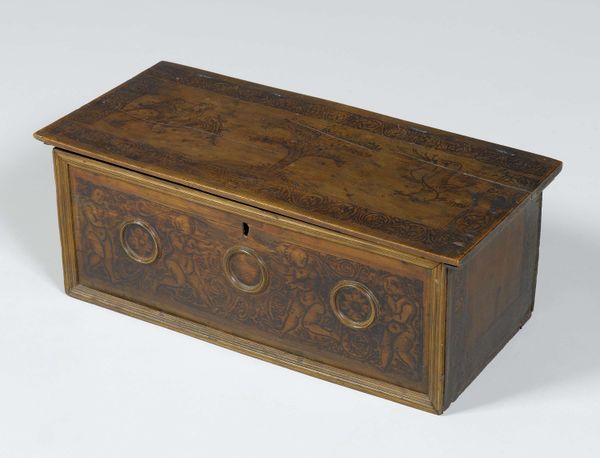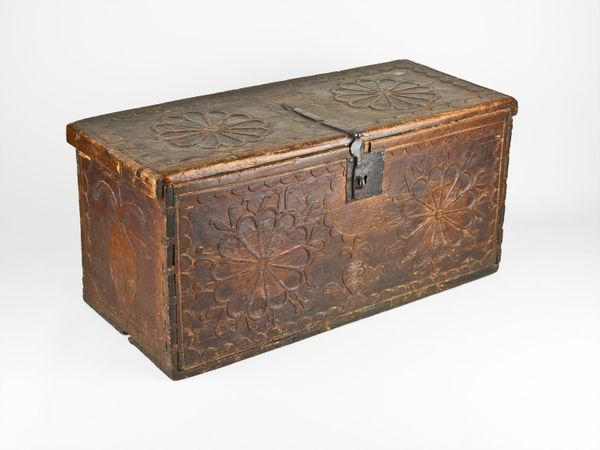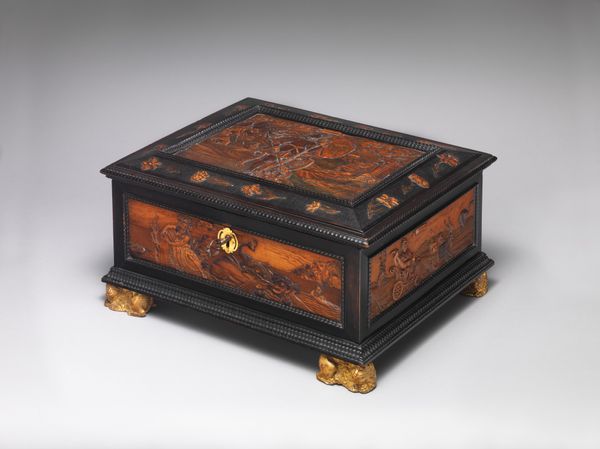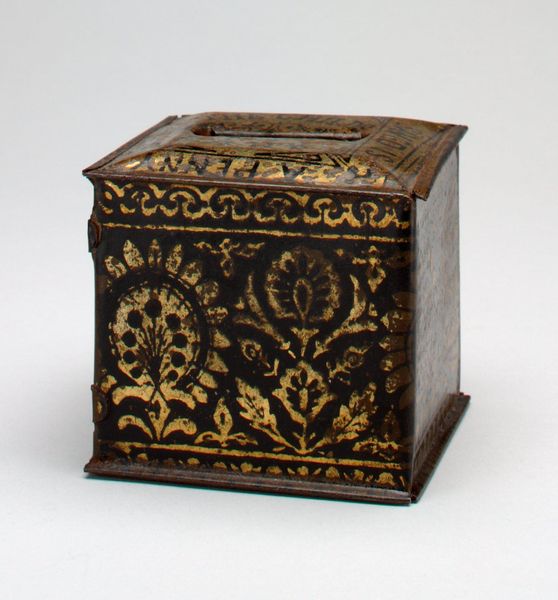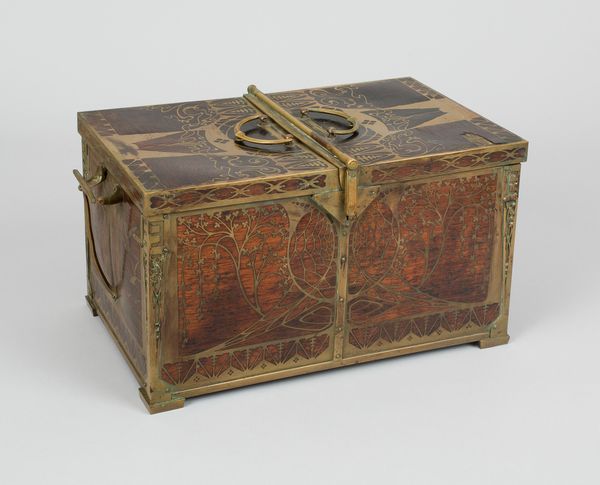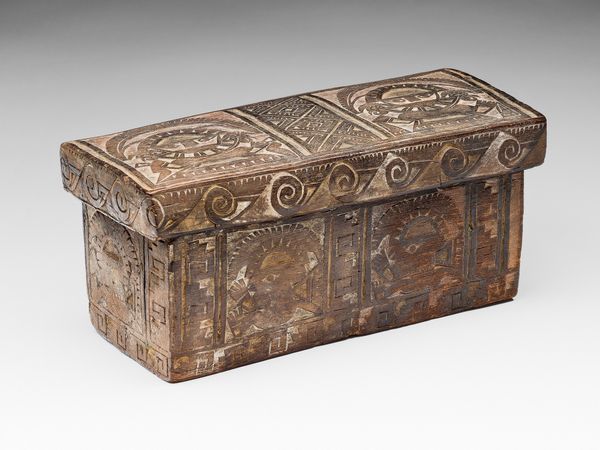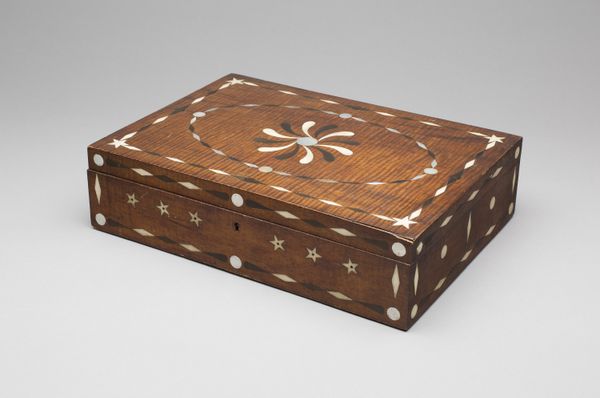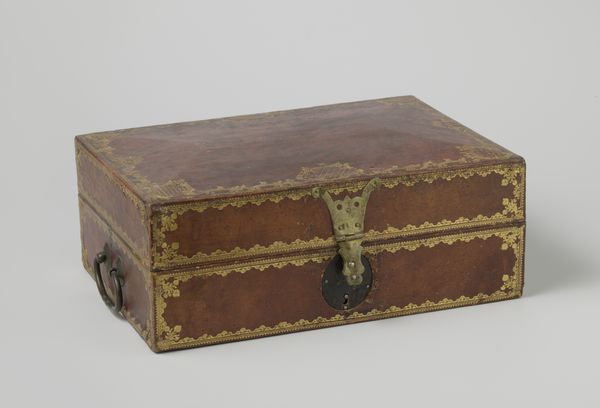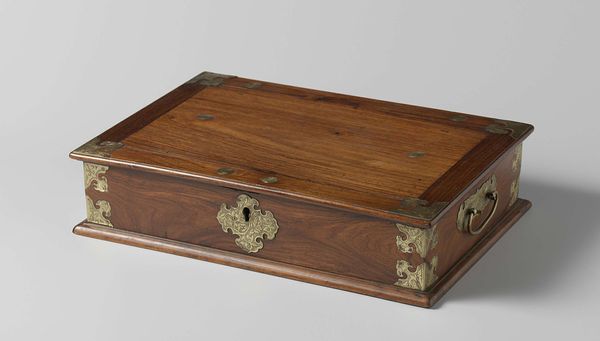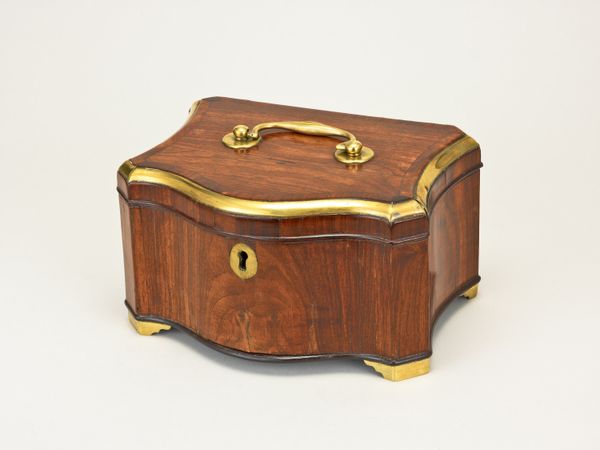
carving, wood
#
wood texture
#
carving
#
furniture
#
wooden texture
#
wood
#
decorative-art
#
rococo
Dimensions: Overall: 7 1/2 × 17 × 12 in. (19.1 × 43.2 × 30.5 cm)
Copyright: Public Domain
Curator: Let’s turn our attention to this captivating “Box,” crafted from wood around 1735-1745 by Pierre Hache. It resides here at the Metropolitan Museum of Art. What strikes you first about this object? Editor: It exudes a feeling of understated luxury. The decorative details seem very refined, yet there is a subdued tone to the whole. The scale suggests it might be intimate—personal perhaps. Curator: Precisely. Hache has masterfully employed carving to imbue the box with intricate ornamentation. The recurring Rococo flourishes and stylized botanical elements lend it a visual rhythm. Note how each face presents a balanced, yet distinct decorative scheme. Editor: The opulence makes me think about its historical context: France in the mid-18th century was a culture marked by extreme socioeconomic disparities. Were pieces like this commissioned by the aristocracy as spaces to hold documents relating to private property and inheritance? Curator: Quite possibly. We might also see this type of furniture as objects of aesthetic refinement in their own right. This box reflects the social and cultural values of its time, when highly crafted, visually arresting, but eminently functional objects, held great importance. The very notion of storage is imbued with value. Editor: I am sure the choice of materials held importance, too. But who was able to have and appreciate these materials? And conversely, who may have suffered because of their labor towards its manifestation? Curator: Indeed, that social dimension cannot be overlooked. Returning to form, though, consider the symmetry and asymmetry, and how they intertwine to form a coherent whole. Editor: I agree that such duality speaks to its artistic impact; thinking about its historical impact opens an entirely new and interesting approach. Curator: Ultimately, examining the aesthetic characteristics of the box and its potential usage enables one to enter a world of art objects that have endured beyond any historical or social constraint. Editor: Yes, engaging with it allows us to investigate both its artful creation, and its role as witness to history, which is what ultimately gives it that power!
Comments
No comments
Be the first to comment and join the conversation on the ultimate creative platform.

